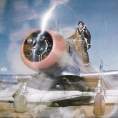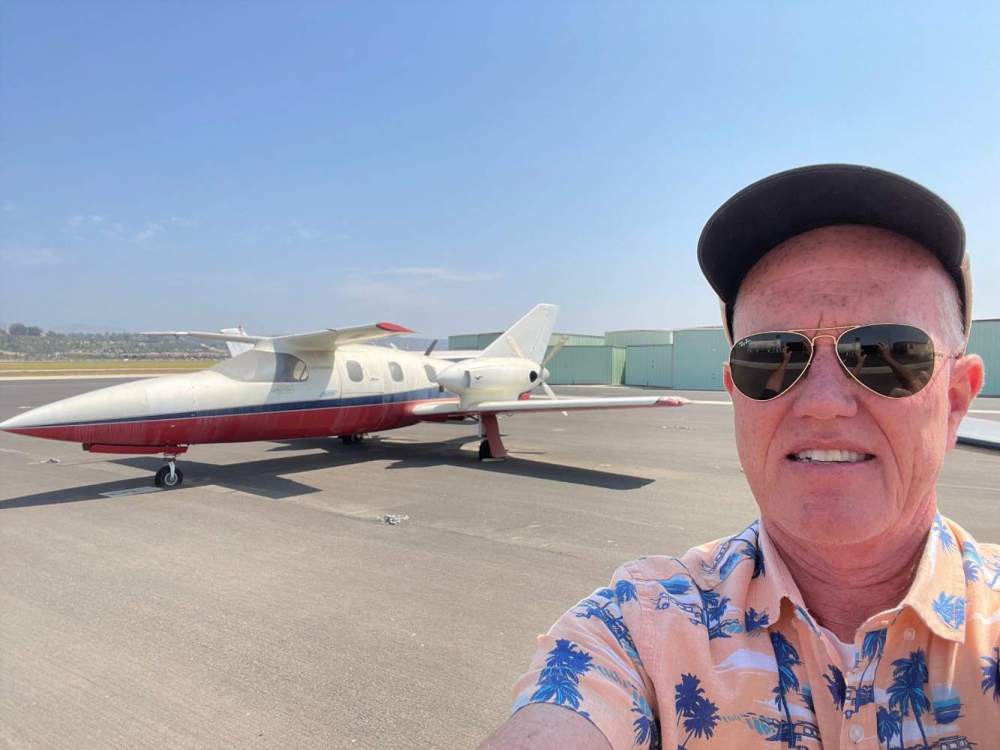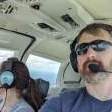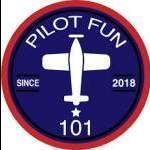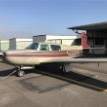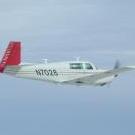Leaderboard
Popular Content
Showing content with the highest reputation on 08/19/2021 in all areas
-
My best advise from experience.... Don’t finance anything you don’t have to.7 points
-
I understand that. But residency takes a lot of time and not much sleep. Fellowship may be a bit better, or not depending on specifics. 450 NM is at least three hours in the air, plus time on the ground. Fatigue is real and my guess is many of the flights you are contemplating will be at night, and often after a 60-70 hour work week. We want you to be alive to experience all of the thing you mention. A few years ago I had to use the allowance of counting night takeoffs and landings toward the 100 night hours so I could get my ATP. I didn't have nearly enough night hours because I, 100% refuse to fly when I'm tired. Everything is a risk-benefit analysis and this one is favoring risk over benefit, in my very humble (but BTDT) opinion.5 points
-
Not the question you asked, but my answer would be to pay off your student loans before getting an airplane. Part of the deal I made with my wife was that I wouldn’t take out a loan for my hobby. Have you checked out this site? https://www.whitecoatinvestor.com4 points
-
It happens instantaneously as you advance the throttle. This is of course advancing the throttle smoothly. If you cram the throttle you will get a big surge , not a good thing.3 points
-
3 points
-
These configuration iterations have been done many, many times before ... especially now with CFD being able to run multiple configurations in minutes. There is a good reason why airplanes are configured "conventionally" - big wing up front and small stabilizer in back. It's the most efficient configuration. IF a surface stalls (it needs to be the forward one to make the recovery stable - the most forward wing of a biplane (normally the upper ... except in the case of the Beech "Staggerwing"), a canard, or the main wing of a conventional configuration. I say "IF a surface stalls" because most conventional configured airplanes don't aerodynamically stall at forward CGs. In a Mooney, it may be possible to run the trim nose UP far enough, but a C180/182 will not aerodynamically stall at forward CG. The tail (horizontal stabilizer) should never stall. The results will be a violent nose down pitching moment. These cases are typically only in Flight Test (and very, very rare) and often end with fatal results (and often the aircraft coming apart structurally). This is why tailplane icing is such a huge issue/problem if it happens. The tailplane also accrues ice significantly faster than the wing (smaller leading edge diameters collect ice quickly). In other words, if you see a little ice on your winds, there is more on your tail. PS. Although Boldmethod has pretty pictures and cool, moving, graphics, ...3 points
-
I found PilotBank in Florida. I'm a physician with other loans (home and school), and the bank AOPA pointed me to offered 7.5% 15 years for 20% down. I called PilotBank directly and asked what they could do (I saw an ad for them), and they offered 4% 30 years for 20% down, so I went with them. Application was pretty easy and quick, and no significant impact on the buying process. As an early-career physician, financing stuff makes total sense. Few other career people are in your situation where you are cash-poor now but have a long-term stable career with high security. On the other hand, if you don't have your ticket yet (or are planning on an IFR rating), I would recommend against buying a plane now. Your training WILL happen in fits and starts during residency, and you will find IFR training as intensive as studying for the boards. The amount of reserve brainpower you have for flight training will be dictated by your medical training, and that means your flight training will take longer and be unpredictable. That's probably not a good setting to be buying a plane. Also realize that any attempt to use GA as a "practical" means of transportation should be disposed of now. It's a (expensive) "hobby" that sometimes, occasionally, maybe, turns out to be helpful on trips and is almost never financially equivalent to flying Southwest. A Mooney and an IFR rating will increase the chances that it's practical, but you'll also have to spend the mental energy on flight planning, ADM and flying. Every vacation will include daily (or more) weather checks and flight planning which only counts as vacation time if you enjoy that sort of thing.2 points
-
External antenna is only required for the G5s if you don’t supply a gps input for it (yes, that gps would have its own antenna). If you do provide the Garmin antenna for the G5, it’s mounted inside the airplane. Ive had dual G5s for 2 1/2 years and they’ve been solid. Zero issues with the batteries or anything else. They work perfectly with my stec 30 ap as well.2 points
-
That is absolutely correct. However, the RV guys have discovered that a large indentation in the rear wall behind #3 is not optimal, and creating a much smaller “bump” in the wall is optimal for airflow around that portion of the cylinder head where there are no fins. They have seen fairly significant changes in cooling from varying that gap by the thickness of a nickel, I believe…. See below: RV builder’s posts regarding #3 cylinder and baffle building Also, their lower baffling is curved and hugs the cylinder and head, unlike many of our setups.2 points
-
So I made it to the airport yesterday and got a full debrief...finally. So hopefully I can fill in some blanks. Per the mechanic, they had put the flaps down when they were preparing the plane for inspection. They had stepped away to work on another plane when they heard the "thud" and the flaps fell all the way to the hard stop. When the looked, they found the rod end was no longer connected to the actuator. Since the rod end bearing couldn't rotate since it was bolted to the control horn, attention was directed to the actuator. Further inspection revealed a set screw hole in the side of the actuator missing said set screw. With the lost set screw it appears the actuator put enough back and forth torque on the rod end to loosen the jamb nut and allow it to turn. Screw replaced, rod end in place, all tightened, rigging checked, and tested. Obviously a system to keep an eye on for the foreseeable future. Thanks to Clarence for spotting the trim control. When we looked there is a plastic guide on the hole already for the wear plate. The line seen in the pictures is just some polish, not a cut. How a 40 yr old plastic ring is still in good shape is beyond me, but it was. For a couple other points that came up. I learned from this that the flaps are connected, so there is no possibility of asymmetric deployment which was my worry when I first heard. The flap actuator for the 75 is electric, not hydraulic. Since the failure was unexpected and not "before" a flap deployment, this still could have been a scary event. Sure a no flap landing is non-event. But what about a full flap landing that suddenly becomes a no-flap landing without any warning? That's NOT a non-event. Thanks to everyone for their feedback. Will keep my eyes on this and let everyone know if anything changes.2 points
-
After years of using dual 430W systems, i thought i would hate touchscreen. Ive somehow come to love it a ton. Yeah turbulence gives me a bit of trouble sometimes, but ive gotten so fast at using the touch systems with a 750/650 that i wouldnt dream of going back now. Though, i would like having a few more dedicated buttons. with flightstream and connext moving my flight plans from ipad to plane has gotten supper easy too.2 points
-
Dave, @Seymour I think your Sensorcon guy needs a spelling update… @DanM20C… The other Dan is our favorite accountant… While we are waiting for that next step for our right seaters… Have you seen the ‘right seat ready’ course by Mrs. DMax and Jolie/Mooney Girl? This is a class for people that inhabit the right seat… it is all about getting safely to the ground. The cool thing about GU landings…. The roll out is really naturally short… no braking required. PP thoughts only, not a CFI… Best regards, -a-2 points
-
DXB's doghouse baffling is so airtight that you can put a compression tester on it and its 80/80. Ive flown a few M20C's now, and they all run hot. some a little hotter, but all are 420 on climb on a few jugs and 380-410 in cruise.2 points
-
2 points
-
For me, losing weight is a lot cheaper than the airplane losing weight. 30 Pounds this year at no cost. Airplane lost 19 pounds but it cost about 15 AMU.2 points
-
The wife and I inherited a world class bass boat when her dad died. We have had it for about 5 years. We are not bass fisherman. I fixed it up last year, the fuel had gone bad and clogged up the fuel injection system. I got it all straightened out along with all other issues it had. It is kind of fun to take it out and hot rod around the lake with it. I don’t know how fast it goes my eyes start watering too much at 75 MPH. It wants to go faster. Anyway, we were having dinner at our favorite watering hole when a guy at the bar said he was looking for a bass boat. Two days later he owned it. The wife has wanted a pontoon boat for a long time and I’m with her on that. She found one that we both liked. It was in Yuma AZ. So I said we would fly out and look at it. I asked her to get the boat owners to pick us up at the airport. She said, they will never give us a good price if they know we have an airplane. So I looked on Airnav and they said Millionair in Yuma had crew cars, so we were set! Well, we made arrangements to see the boat and flew to Yuma. When we got there, the crew car was a brand new Mercedes SL. Oh crap this is bad! BTW, fly to Yuma just for the car! It is a sweet ride! So we find the mobile home with the boat and luckily there was a big bush at their next door neighbors house, so we parked the Benz behind the bush and went in. While we were talking to the guy, his son rolls up in a tow truck. He actually owned the boat. He immediately makes a comment about us rolling up in the new Mercedes, so I explain that it was the only car available when we flew our plane in. The wife says “you aren’t helping things here”. We got a good deal on the boat anyway. What ever happened to the 30 year old crown vics?1 point
-
1 point
-
Several aircraft won’t stall in a level flight slowly decreasing speed type of approach stall. The S2R-H80 doesn’t stall even at max aft CG, it simply runs out of elevator authority and just “mushes” at a pretty high descent rate, but you still have full aileron control etc. From memory a Piper 140 is the same way, they just mush, the wing never fully stalls. But it and I’d bet all aircraft can be made to stall if the entry is aggressive enough. Not that I have stalled all that many aircraft, but the most violent stall I’ve had was a Cessna 210 at a low cruise power. You knew the stall was going to be ugly because prior to the stall you had run completely out of rudder and the ball was slipping further out as speed decreased, and sure enough when she stalled it went completely over on its back and would have developed a spin I’m sure if allowed. Cessna’s have as a general rule a reputation of very benign stalls, but a 210 under even low power will get ugly fast, it’s not hard all to see that a real departure stall would be unsurvivable no matter how good you are. I’ve never stalled a Mooney under power and don’t intend to, ever. From my limited experience, the more modern the design, often the more difficult the stall / spin recovery, largely due to smaller less effective rudders. All the old aircraft, especially the ones with the little wheel in the back had large. powerful rudders. There is an old saying, “easy in, easy out” meaning be darn careful spinning an aircraft that's spin resistant, they have a tendency to very difficult to recover.1 point
-
Had lunch with a spray pilot buddy of mine, the Snow Aircraft became the Thrush, Leland sold Thrush and after the No Compete clause played out Leland started building the AirTractor @Will.iam I asked about the flaps during turns…. The 502 fully loaded won’t turn with out flaps (pilot deployed), once the hopper gets down about half (250 gal) you can generally leave the flaps up in the turns1 point
-
Dragging up an old thread... Just saw the Aerocruze 100 advertised for sale on Aircraft Spruce's website along with a funny STC request form at the bottom. In the description it says (Approval pending) which seems to indicate that the STC authorization hasn't yet been handed down. Once I put the product in-basket it shows that there's no stock in any of their locations. Is it just me or does it seem odd that AS will take my money for a product which isn't yet approved?1 point
-
Cool I’m going to grind my flap off too. It seems to stay even now with the flap on but will no doubt work better more flush with the window.1 point
-
Holy shit, what was that motor using for brushes, tungsten carbide??? Sent from my Pixel 3a using Tapatalk1 point
-
A ground speed display would be nice, I hope they do something with that. I hadn’t thought about a vfr gps as the only one available would be my I pad connected to a Sentry ADSB in device. Not sure how that would interface. I am having a Garmin 355 Waas gps/com installed as the primary navigation source and also tying in my Nav radio as well.1 point
-
I purchased a used one that already had the modifications done to it. I got it from @Alan Fox here on Mooneyspace.com.1 point
-
Send it to Laser. The best Mooney tube welders out there. I had a cracked mount about 30 years ago. I sent it to Laser and it came back looking like new.1 point
-
While pictures would certainly be ideal, I bet LASAR still has a copy of the work order, plus surely there was some repair work, not just parts replacement and if so it was a major repair, and that’s a 337, which is on file at Oklahoma City and for $10 you can have a CD of all the records that are filed. Problem is do you have enough time to get them?1 point
-
The G5 and the AV30s are not the same category of product. The G5 doesnt require an external antenna, it can uese the GPS for aiding. The AV30 is also a DG, not a full featured HSI. You must set it, and it drifts, just like a vacuum DG.1 point
-
That is the threshold. It is more than just a bent piece of metal since it is not only "L" shape in cross section, but also is has a radius on one end. It is a formed part which you would have a hard time making. The side of the "L" that is inside the airplane will need to be stretched as it is on the outside edge of the radius to be formed. (If it were in the inside of the bend, you could use shrinking/forming pliers but that is not the case). You best find one already made. John Breda1 point
-
Probably not a good idea..... The tail tie-down is not designed for that purpose. You might get away with it, but the tail tie-down is designed to accommodate vertical loads, not the horizontal load of pulling the airplane. When you are venturing away from the world of that which is known and tested, you take your chances. John Breda1 point
-
Depending on where it is cracked there is a service bulletin out on the older engine mounts. I had to replace mine when it cracked in the exact spot the SB said it would. https://www.mooney.com/wp-content/uploads/2020/12/SBM20-175.pdf1 point
-
I promise mine is very much real...On the subject of swapping them out, I have been following a 65 C model that has been crossing the Atlantic that added a stinger. My Aerostar brings everyone out on the ramp, I was up at KAND, went to breakfast and when I came back I had 7 different people come up and talk to me about the tail.1 point
-
You really don't want anyone welding with the engine mount still on the airframe. Plus personally I wouldn't settle for anything less than replacing the cracked tube section; although typically other options are possible. It's not a big deal to lift the engine, pull the engine mount, repair and refinish to like new. Then rehang with new engine mounts and hardware if desired. What caused the crack? YesThey don't usually crack on their own. Sent from my iPhone using Tapatalk1 point
-
My predictions about RHV were correct. https://www.avweb.com/aviation-news/can-unleaded-avgas-stop-efforts-to-close-reid-hillview-airport/?MailingID=697&utm_source=ActiveCampaign&utm_medium=email&utm_content=Unleaded+Avgas+for+Reid-Hillview%2C+Chaos+in+Kabul&utm_campaign=Unleaded+Avgas+for+Reid-Hillview%2C+Chaos+in+Kabul%2C+Wednesday%2C+August+18%2C+20211 point
-
1 point
-
1 point
-
Two things are important when checking timing. 1. Accurately determining TDC. You can use the cone/protractor that attaches to the spinner or a Time Rite. But the best is to use the timing marks on the ring gear. 2. You must back up the prop a half turn and rotate it slowly in the normal direction to note the point where the points open. You can’t rock the prop back and forth (like when checking compression) because the gear backlash will introduce inconsistency. There is an internal timing called E-gap, but that affects the output voltage more than the timing. It can show up as an excessive mag drop during runup. Skip1 point
-
The aircraft is not flying in the photo. The wings are folded, the left stabilizer and elevator are gone, and it is shuttlecocking into the ground. The aerodynamics in that photo have no relationship to the aerodynamics of a flying aircraft. Think of it as hanging from a string, with some upward drag because the wings are still attached although upward folded. Remember, there is a passenger and luggage in the back, upward drag on the wings about a center of drag that no longer has anything to do with the classic center of lift of a wing, and practically no upward drag at the tail. People keep trying to relate that image to classic, flying aircraft, aerodynamics. The aircraft is not flying. There is no lift from the no-longer-existing elevator, which is on a lawn two blocks away or working at arriving on that lawn.1 point
-
As a young VFR pilot… I always wondered why the IFR pilots would reference waypoints that I had no idea existed…. -a-1 point
-
Seth, Respectfully, I think you are on the wrong track. There is an often underestimated cost in moving instruments around, cutting and painting a panel to fit etc. By the time you are finished with the Mid Continent Gyro, moving stuff around, etc., you will end up with a panel that looks 'unbalanced' and is probably no more reliable or functional than you have now. And you might save $1k over 2 GI275's. Garmin have (had) a special on buying a pair of 275's, you can get adaptor plates to directly fit into the KI256 and KI525 holes. You will get the GPSS you want, a really good interface and compatibility between the 2 GI-275s. And you will remove a bunch of weight too. Communicate with Erik Bolt on this to get real pricing and feedback, he went around this circle too, and I suspect he has no regrets. I started with 1 GI275 and a Sandel SN3308, quickly got talked into a pair of 275's. Then scope creep elevated me to a used G500 with 1 GI275 backup. Aerodon1 point
-
@Will.iam: @Bob - S50 gave a great reason. I also like the "stab" pun, too! Now we'll get a little more into it. Downwash from the canard also affects the main wing (lowering the main wing local angle of attack) ... but only over the span of the canard. In other words, the angle of incidence of the inboard section of the main wing needs to be higher than the outboard section of the main wing. BUT, the downwash from the canard varies with the amount of lift being produced. Therefore the main wing inboard section needs to have a variable incidence angle with the outboard section incidence angle remaining the same. So we compromise ... with a fixed angle of incidence for the whole main wing. As a result in cruise, the Starship inboard wing has roughly 1000 lbs. of down force! Putting flaps on a canard design just makes all the above even more complicated ... as was learned on the Starship. Yes, the same is true with an aft tail configuration, but the whole stabilizer is in the same downwash of the main wing. With a fixed stabilizer, we design for minimum cruise drag to set the horizontal stabilizer angle of incidence. On our Mooney aircraft, we trim the stabilizer to the best angle of incidence. Oh, and those pusher propellers ... they have no prayer of being efficient being downstream of the canard, fuselage, main wing, nacelle, exhaust, etc.1 point
-
I would take out the front seats and take them to an upholstery shop to see how closely they could match them, and in today's market I'd start at 145K.1 point
-
On a N-reg, certainly. But first things first, the IR, from the FAA.1 point
-
I really don’t edit out my mistakes. I should have said a practice RNAV. I do that to practice and practice with the IFD. I was not on a flight plan. When I noticed I could not make or see the runway until the last minute I went around. And of course messed up the RWY call sign. But got it right there after. Again I saw all this when I was editing the video and left it. Cutting down some chatter I agree with. It’s just a habit. My call sign always goofs people up so I don’t use the whole call sign wants acknowledge but I most always use Mooney 87N. Thank you all for the good comments. One of the reasons I don’t edit most stiff out is for the feed back. I just exit out the boring parts. Lol1 point
-
It sounds like you and Dev ought to swap carburetors.1 point
-
Welcome aboard Brandt! Great first post, and pirep for Byerly… Best regards, -a-1 point
-
No worry's but if you're doing this in the hope of more favorable insurance rates a couple hours in a B model shortbody won't make any difference in your insurance rates for a F mid-body. I'd save your money and put it towards your new F. It'll take over a 100 hrs in type before your iniital rates goes down. Transition training isn't advanced either but it should be thorough covering all the systems, equipment and procedures in your bird.1 point
-
It all depends how you define ROI. I'm much younger than the OP, looking at 49 in a few months. I put the GFC500 in my 1965 D which could be argued as a waste of money. I'm based in SoCal. Since getting it back it was used for a trip to St George and back Memorial Day Weekend, we were in Pagosa Springs in Colorado last weekend with stops in Phoenix going and returning to visit my folks. Flew to Idaho Falls yesterday to see family and back home today, plus more local flights. If I had to sell the plane for some unforseen reason tomorrow my financial ROI would be horrible, however if you measured it in terms of enjoyment I'm already ahead on that ROI scale. Everything in life is not about money, in fact very little of what really matters is about money.1 point
-
If you are using any lightweight starter on a TCM TSIO360-MB engine in a Mooney with a 14v electrical system - BEWARE. In my Mooney 262 the lightweight starter caused the starter T-Drive gear and shaft to fracture in flight with a resultant simultaneous vacuum and low voltage warning. Fortunately, my airplane is equipped with a second alternator and electric vacuum backups. The failure stopped the T-drive from working properly and I had a partial loss of power due to the turbo filling with oil. My IA did some research and it turns out that TCM does not recommend any version of a lightweight starter on this engine in a 14v Mooney (28V system is OK). The only starter safe to use is the old version PN: 646238-R. I think that the only models with a 14v system running the MB engine are the converted 231's. It's always something, Jeff1 point
-
Wilmington, NC meets all that. Wifey and I will be moving there in about a year and a half. Add to your list great beach access and offshore diving.1 point
-
Thanks for the update, Jim, even though it's bad news. At this point it's almost worth wondering if 3-D printing is the best answer. The printing part might go pretty smoothly, but I don't know the first thing about how to build a model. Maybe someone near me has a 3-D scanner that could scan the remaining good ones.1 point




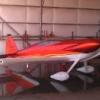





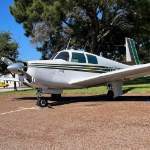
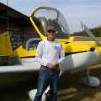


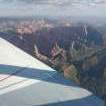


.thumb.jpg.44bc5ad17b44ec09b48bdca2a82f7a76.jpg)
